By teens, for teens

















It’s a new year, and we want to start it right — with a new issue! In this special edition of Teen Ink magazine, we focus on those who have a knack for the performing arts! selected a few of these talented teens to share their personal stories and with singer-songwriter and pianist, Graciela! For those of you who are new to Teen Ink, we would like to welcome you to this wonderful, talented community. To those who are not so new, we’d
Best regards,
The Teen Ink Team

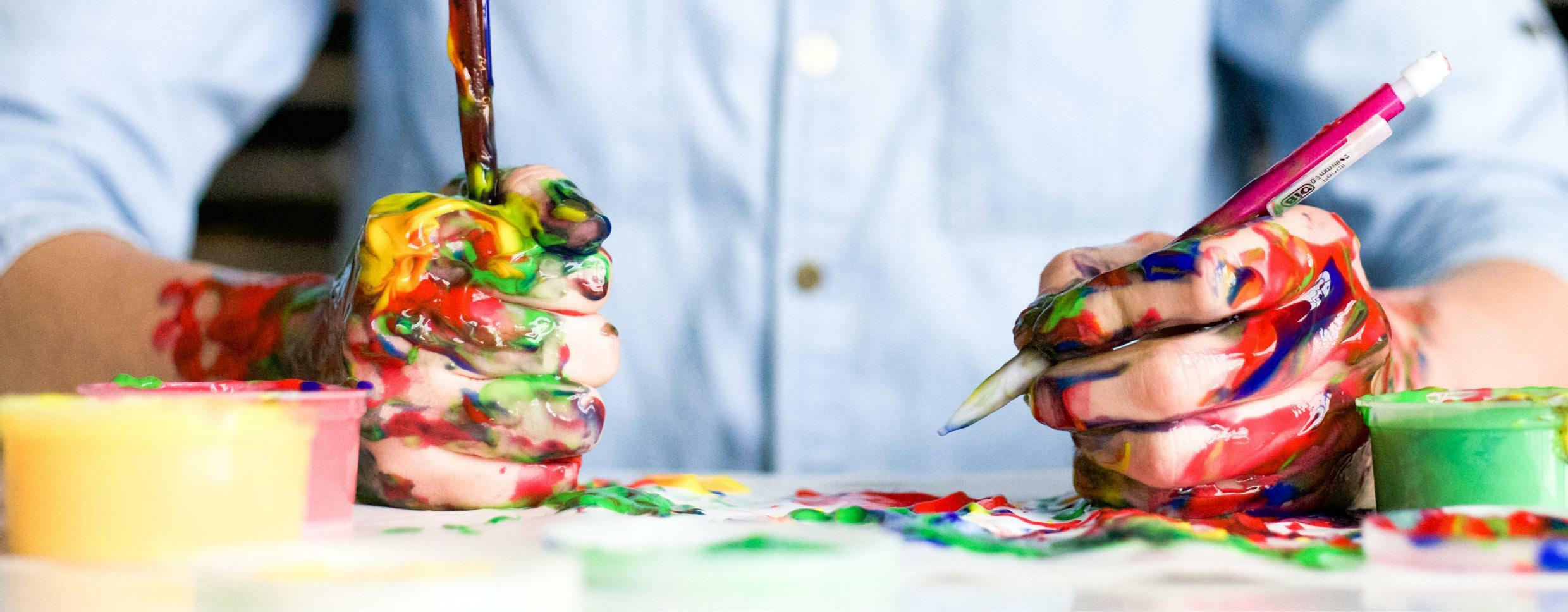

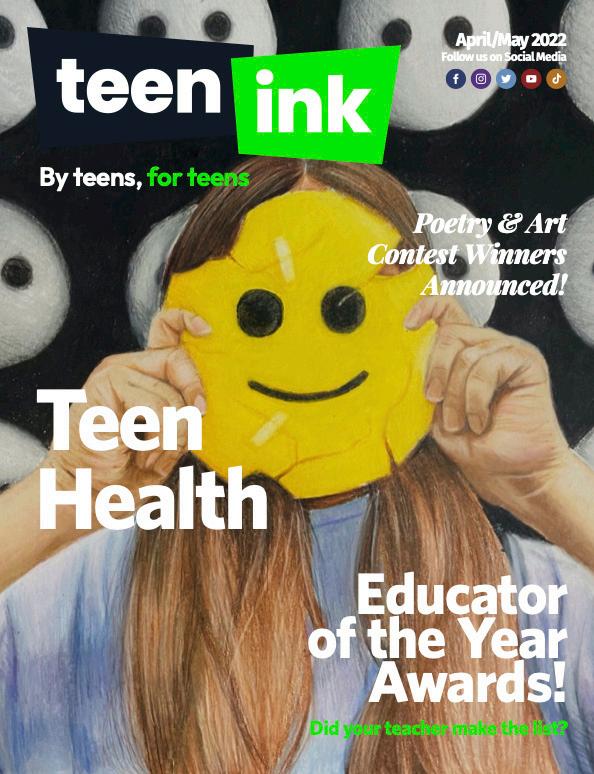

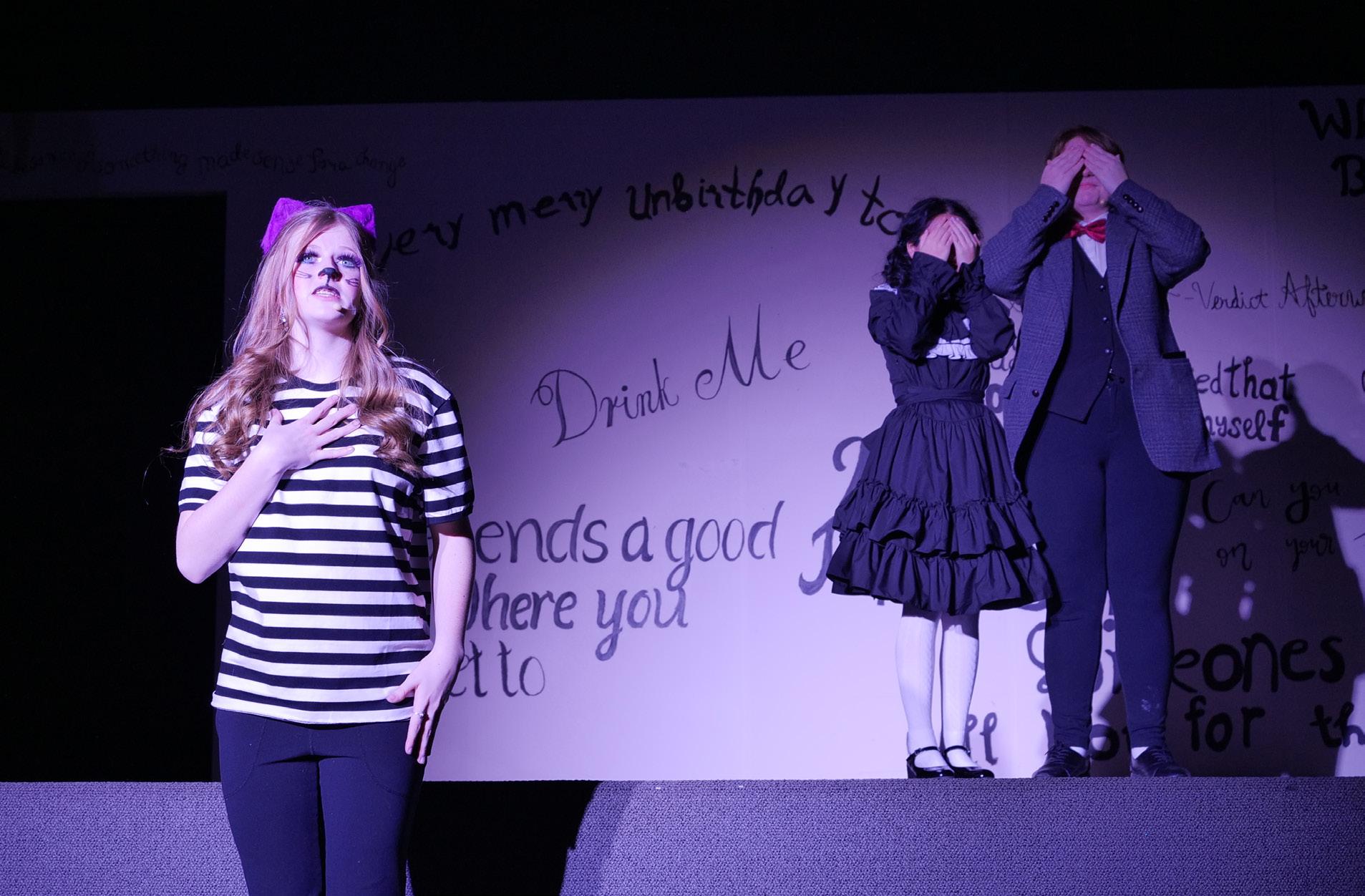
“Curtains up in three minutes,” I hear my director call offstage. I take a deep breath and quickly run through all my lines, with choreography in my head.
“Places!”
I hear the same voice echo through the backstage of the auditorium. As I run on stage, thoughts fill my head. What if I mess up? Or forget my lines? Could I ruin the show? Before I get too caught up in my own mind, I feel my castmate tap me on the shoulder.
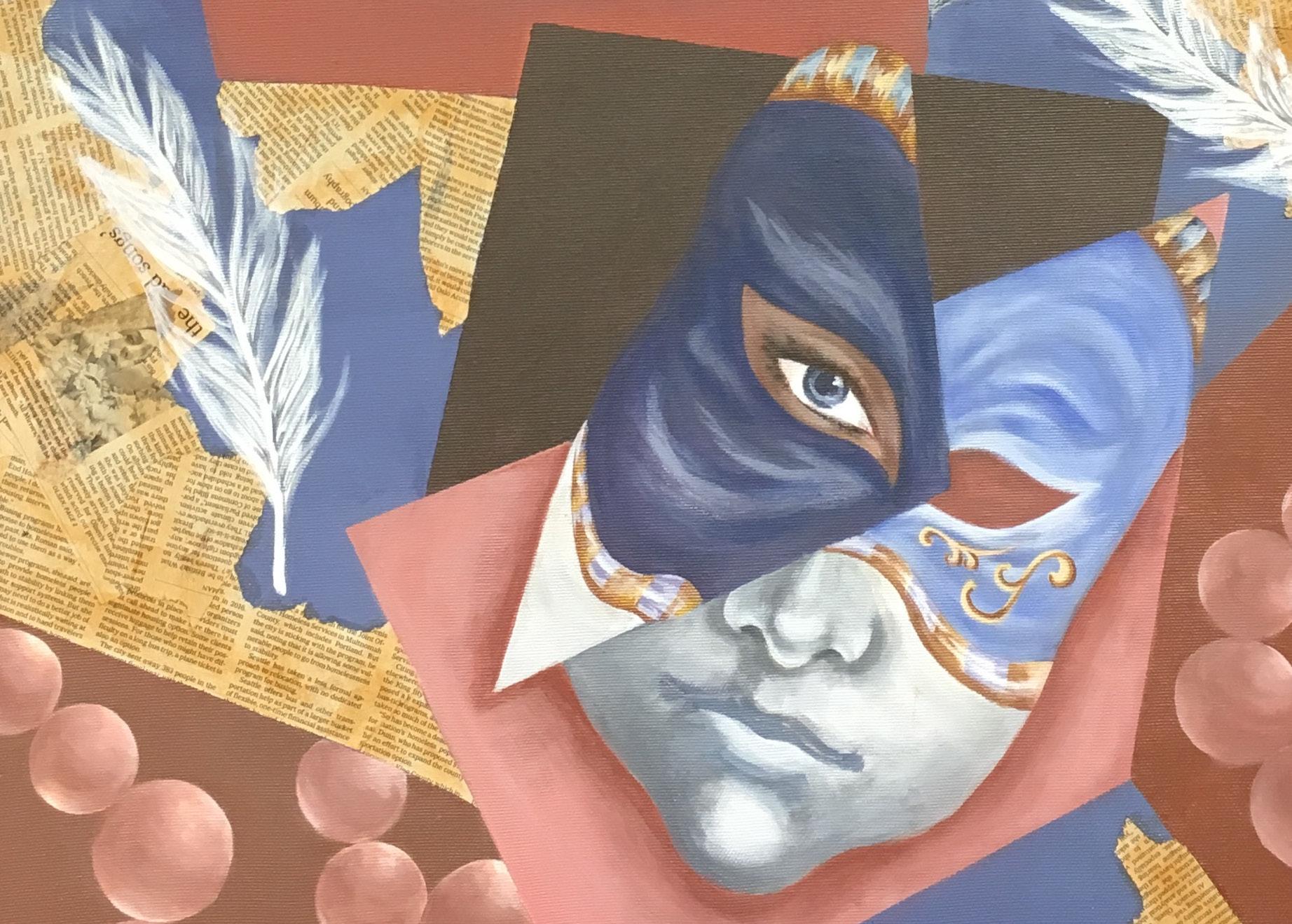
“Hey, break a leg,” she says with a look of nervous excitement plastered on her face.
“You too,” I whisper back, shaping my lips into a smile. I hear the faint sliding of curtain rings on metal as bright lights peak through the thick black fabric that’s opening wider and wider. I get a rush of nerves and emotions — fear, excitement, joy — but most of all, pride. I can barely make out the silhouettes of my castmates, family, and friends, as the curtains come to a small jolting stop. In the lighting they look like ghosts. Blank expressions, but it seems like all their eyes are pointed at me.
Out of the corner of my eye, I see the small movement of people backstage, as the first notes of the piano
ring through the auditorium. Suddenly, I hear my cue. Without giving myself enough time to worry about knowing the lyrics, I start to sing. Like muscle memory. The sound gets louder and louder as my castmates’ voices join in behind and next to me. Soon we fill the auditorium with emotion just from our voices.
Every day for the past three weeks, we have been constantly working, from the nerve-racking audition day and reveal of the cast list, to perfecting every note and step we take while on stage. Now we’re here. It has all led up to this moment, these curtains opening to reveal the stage. Our first show.
Blank expressions, but it seems like all their eyes are pointed at me
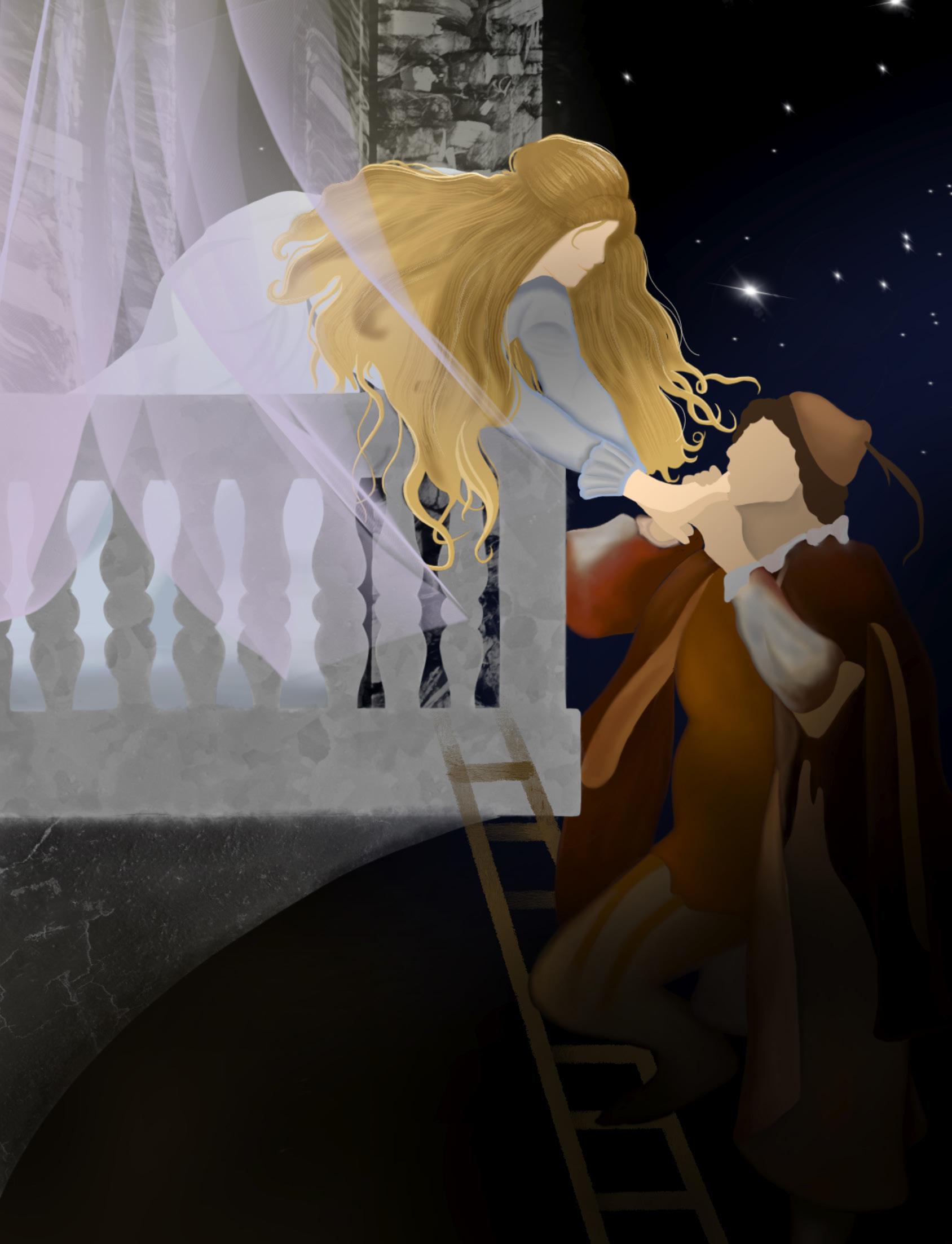 ARTICLE BY LAUREN WILLIAMS, MARLBOROUGH, MA ARTWORK BY YEONY JUNG, DUBAI MARINA, UAE
ARTICLE BY LAUREN WILLIAMS, MARLBOROUGH, MA ARTWORK BY YEONY JUNG, DUBAI MARINA, UAE
The room is quiet. There are people sitting in seats, whispering in the dim theater. They have all agreed to join this hall of stories, this fairytale heard together.

They turn in unison. The murmurs cease, and their eyes alight upon the stage, where a single spotlight shines. It turns the curtain, once gray with shadow, into a bright velvety crimson. The curtain rises, slowly. And people, costumed, fill the stage. They are pretending, and yet telling the world’s truth, such that all in the audience are swayed at once.
They cry in unison, their tears wetting the theater floor. They laugh, and it all comes at once — a great swell of sound, deep and joyful as a choir. They sigh, groan, think and feel. They look at the characters and see a mirror to themselves, every person joined in this universal dance.
A drama is a shared reverie — a moment to understand that every person feels the same earthquaking, song-raising emotions that we do in our quietest moments outside of the theater. Inside, we are one eye watching, one ear listening.
We are sitting in the pews, so long ago, stained glass filling the air with color as the preacher tells a tale we all understand. We are in the woods, the night quiet, the sky filled with stars (or are those spotlights, too?) and the ground cool dirt, as the firelight flickers on our faces. We listen to the storyteller. There are strong men and brave women and magic beyond belief, but it all ties back to us, ancient and unchanging.
The Greeks did it, I heard, and Shakespeare did it too, and now there is Tony Kushner and Broadway. As long as there are people, there will be stories to tell, and emotion to entrance us.
The stories never change, really. They are always the same, the
tragedy and the rise, the prologue, the climax, because we are really all one person, sullen and thinking that we are alone in our thoughts. So we share how we feel in the form of fiction, again and again. And each time, the message is received and understood, the cry heard, and the joyful call rebounding.
audience. We are together — not just watching alone, eyes glued to the front, but watching as one.
We see the performers, in their top hats and outrageous gray beards and Victorian clothing, yet still so thoroughly us that the drapery is irrelevant. Tiny Tim walks around the edge of the stage, wishing us
A novel is its own world, a private place to listen. There are only two chairs, you and the author, and it is a lovely speech to warm your heart, but no one sits beside you to experience the story, too. A play is the same story, made real and visual and true, experienced with an audience. If you laugh, will they follow you? Are you all not members of a lifelong improv group?
Are the actors really acting? Or have they felt it all before? And you have, too, which is why you clap at the end. Are we really so different? No. And we never were.
I remember seeing “A Christmas Carol,” years ago, performed by a Boston troupe on a circular stage. It reminded me of a miniature amphitheater, albeit in a cramped and dark room housed in a brick building on a congested city street.
The circle is even better, for drama, than the square. In the circle, we look at the actors, but also the
a merry Christmas. The actor is himself, and yet he is Tiny Tim too — when they say that personality is an act, I believe it. We are actors upon a stage, making ourselves into anything we pretend to be.
The troupe seems to agree. At the play’s end, they invite the small audience to the center of the room, the stage floor. We sing a final song together, “Auld Lang Syne,” and they give us branches of holly to wave. The characters are us, and we are them. There is no difference.
Theater is a chance for us to expose the beautiful and hidden truth. We are all about the same, and therefore can all understand each other. We are characters of our own making, but we can change our act just as easily as the villain rejoins the stage as a baker in the ensemble for the finale. Nothing is set in stone. Our life is a play, us players, and we are not alone, because the ensemble is seven billion wide.
THEY ARE PRETENDING, AND YET TELLING THE WORLD’S TRUTH, SUCH THAT ALL IN THE AUDIENCE ARE SWAYED AT ONCE
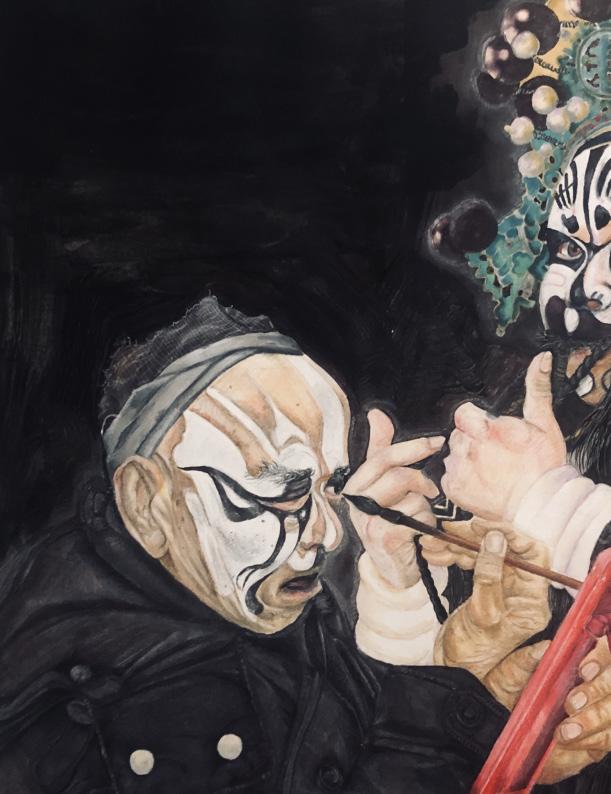
Any attempt to draw attention to myself was either ignored or ended negatively. Except for the day I got one of the main roles in a play. It was an opportunity for me to finally be noticed. I got to be known, even if it was more a character than myself. I was so excited knowing that I got to be in a play… until it hit me that I was actually in a play.
I had lines to remember — a lot of lines.

I have a poor memory that always forgets sentences once they leave my mouth. This made me nervous because I did not want to mess up my lines on stage, where I would have all those eyes staring at me and the rest of the cast standing there awkwardly as I choked. Throughout the time I had to memorize my lines, I could barely watch TV without thinking about how those actors could remember their lines so easily.
I felt so behind from the rest of the group. It sounded so simple — just remember some sentences and say them. Yet, the rest of the cast seemed to be able to memorize them so easily, and I could not. All I wanted to do was hide from everyone. I did not want to see how disappointed they were. All I could do was cry, which is what I always do under any form of stress.
One day, I realized something that made me less anxious: everyone else on the cast was on the same page. Truthfully, I still felt behind, but I was not alone. They also had some struggles with remembering their lines, it was not just me. We had to work together to figure it out. I was still
nervous, but less knowing the others were with me.
On opening night, I wasn’t as focused on my nervousness until I was waiting offstage with the rest of the cast, looking at my script one last time to make sure I remembered my lines correctly. It was time.
Standing next to the person I was about to walk on stage with, both of us gathered some last-minute courage. I had to act cocky and full of myself — it was my character. Tonight, I was no longer my side-character self. I was the main character — the one who gets to have a loud voice and stage presence. I burst open the prop door and proudly recited my lines. The lights on the stage were so bright, making the crowd look like nothing more than
a dark void. I was not nervous, not a bit. It almost felt like a rehearsal, but with chuckles from the audience every now and then.
The rest of the play was mostly a blur, I just remember repeating my next line over and over in my head until it was my turn to speak, and checking
Tonight, I was no longer my sidecharacter self. I was the main character — the one who gets to have a loud voice and stage presence
If life was a show, I think I would be a side character.
my script offstage every time the stage crew changed the set. Even though I was so stressed and worried the entire time before the play, getting on the stage was relieving. It felt so natural and free to be there. It made me want to smile when I heard the crowd laugh, but I had to stay in character. I could run around the stage without feeling a thing.

bored from doing the same play three nights in a row. We missed a page of dialogue but it sailed smoothly, I would say. The thing that made it memorable was the end. My family was there to see it. My grandparents, my parents, my uncles, my siblings, and some of my cousins. All of them.
I was so happy, and they were so surprised I could be that loud. Thinking I would freeze on the spot for constantly being so shy and soft-spoken. Even my mom said she was proud, which is not something I hear that often from many people, but especially from her. I took pictures with the crew and with some of my family in my costume before I changed out of it. My main character role was now over and put away. It did not take long for the effects of my natural side-character role to take its place once again.
Once the play was over, we all walked backstage and had just a moment of silence before we all cheered and celebrated our first night. After changing out of my costume, I walked out front to see my sister there. My friends wanted to celebrate by going to IHOP, so my sister dropped us off there.
The second night was a blur, almost forgettable to me. I just assume it went well. The third night, not my proudest in my opinion. Truthfully, I was already getting
I had attention and the stage for three days. I got to be someone for once, even if that someone was not me. I knew what it was like to be the main character. I will miss receiving that much positive attention, but maybe I can earn it again one day. Either way, I have to remember, life is not a show and I’m not a side character in it.
EVEN MY MOM SAID SHE WAS PROUD, WHICH IS NOT SOMETHING I HEAR THAT OFTEN FROM MANY PEOPLE, BUT ESPECIALLY FROM HER
The last five months of my life have led up to this moment.
The stage was cold, as most are — the unfeeling cinder block walls steal the heat from the air, tensing the shoulders and sending goosebumps up and down the arm. The air smells empty — the great expanse of nothing diminishes the otherwise muddled scent of tens of thousands of strangers sharing the same space for a few moments.
Silence. I hold the wooden board by its cold brass handles. I can already feel the tenseness of the room poisoning my psyche and creeping up my spine. The ghost light spills its somber echo onto the black sea below, casting long shadows. I wait in silence before the red line is drawn to separate the wing from the stage — safety from showtime.
I look at Kai — my nervous expression is mirrored back at me. We exchange a nod.
Gazing out into the audience, three cold, mechanical clicks resound off the theater walls; three lights appear in the audience. The cough of a man does little to dispel the taut atmosphere. The red exit signs in the theater well, ever crying their dire warning, cast a sullen glow over the stark blue seats of the auditorium.
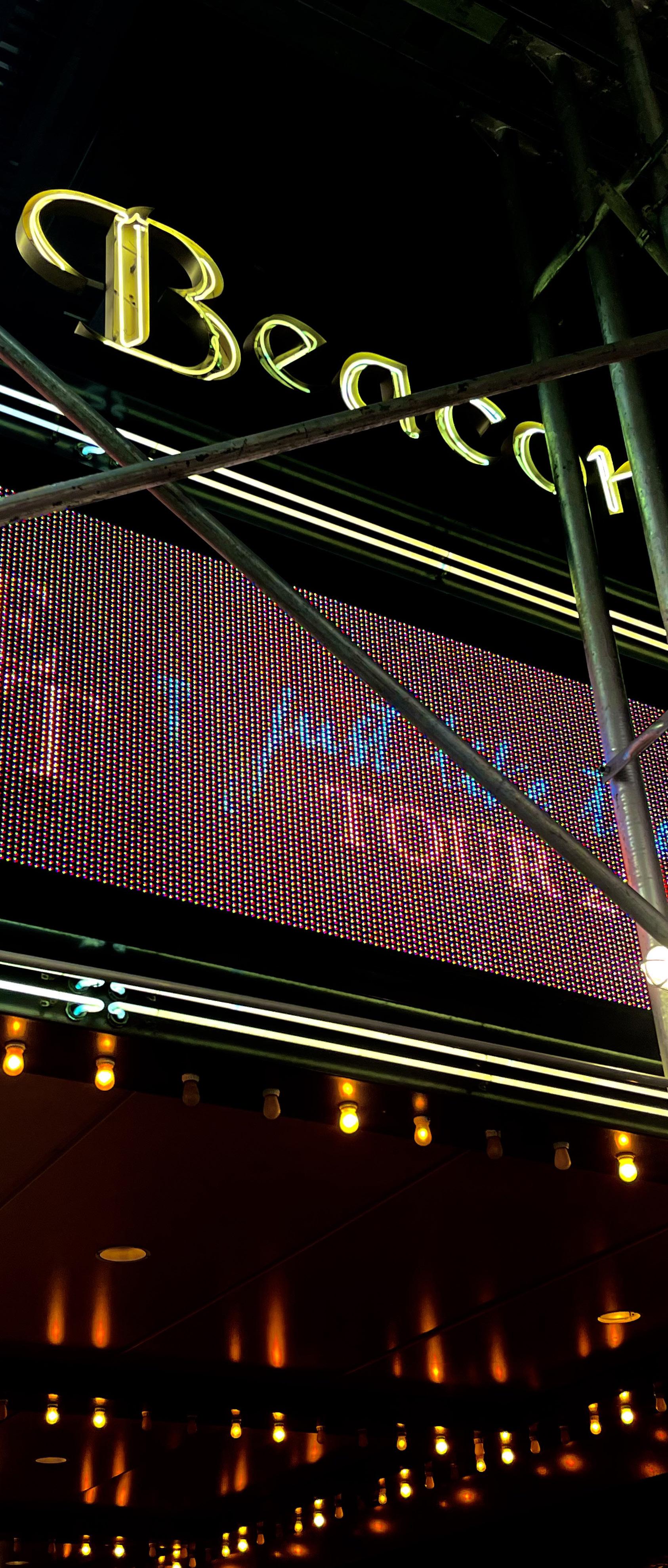
Looking across the stage, I see Katie, her rickety wooden cart in hand. She glances at me, and gives the thumbs up.
Here goes nothing.
The click, click, click of the emcee’s heels resound across the stage floor, the rear walls of the theater reflecting its hollow dissonance. With clipboard in hand, she takes a breath and clears her throat.
“Mountain View High School, your time begins now.”
PHOTO BY JACKIE HUANG, SCARSDALE, NY“I’m a writer, trumpet player, singer, actor, and squash player. I’m a 15-yearold kid with a lot left in the world to learn. I love time and space to myself, but I rarely ever forget the moments I share with others. I cherish my family despite our many arguments and differences, and despite my inability to communicate that appreciation sometimes.”
Teen Ink: What do you love most about dance?
Christopher: In my experience, even though dance is often choreographed and has some sort of structure, it is the dancer’s job to imbue their motions with emotion and purpose. This is what I love about dance: creating a moving, visual image with my body that I can make into art. What has always distinguished dance from other art forms like visual art, music, or even writing, is how emotion and purpose can be portrayed so instinctively with the human body.
TI: How long have you been interested in dance?
CF: I have been interested in dance since my first dance class in 3rd grade; and I have taken a few ballet, modern, and contemporary dance classes since.
TI: How did you get into the hobby?
CF: I got into dance because my mom signed me up for a dance class without my knowledge, and then made me attend it despite my reluctance. As I detail in [Shatter and Break], I was quite nervous at first, but the warm environment and people soon thawed my self-conscious shell; and I continued to go to classes because of how much I enjoyed that first one.
TI: Do you have any other hobbies?
CF: I play the trumpet and I sing. I also love to act. I play squash and I love watching professional hockey; my personal favorite team is the Montreal Canadiens.
TI: Do you have any tips for those starting out in dance?
CF: Like most things, anybody starting out in dance should be as free as possible; the dance studio is the perfect place to practice not caring about what anybody thinks and especially what you think about yourself. When starting out, I think the point is to find the enjoyment in dance, which can only be done if you let yourself go and do whatever you feel like. From there, you have a
whole spectrum of action to narrow down to a performance.
TI: Do you have any interesting stories/experiences relating to dance?
CF: At the beginning of my freshman year fall term, I was automatically placed in an Intro to Dance class. I tried my best to drop it for an Intro to Art class, since that would help me fulfill a requirement quicker, but I was stuck in the dance class. So, on the first day of classes, I ended up going to the wrong room, along with everybody else in my class (although we didn’t know we were all in the same class at the time). Finally, when we found the actual classroom we were supposed to be in, and class started, I found myself enjoying myself more than I had expected. The teacher, my friends in the class, and the actual learning material all helped to make that my favorite class of my fall term. Once again, a dance class had exceeded my expectations by miles.


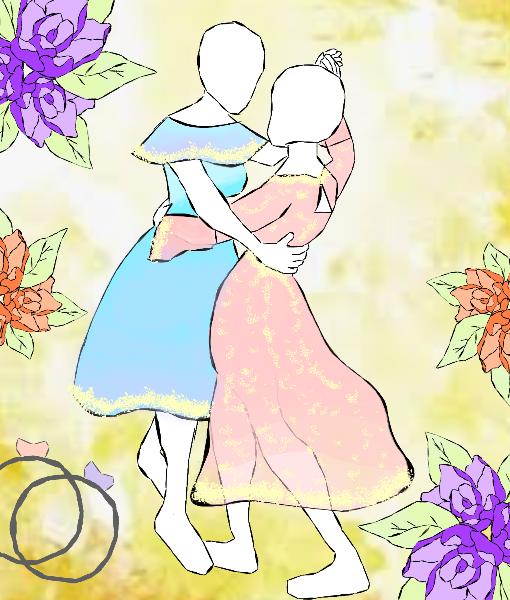


 ARTICLE BY KAYLA SANDOVAL, MANCHESTER, CT
ARTICLE BY KAYLA SANDOVAL, MANCHESTER, CT
“Romeo and Juliet,” “Midsummer Night’s Dream,” and “Swan Lake” are among the most famous ballets that rely on gender roles. These dance pieces have a pas de deux, or romantic male-female duet. These strict gender roles can be quite upsetting for dancers who want total freedom in their gender expression. Breaking these gender archetypes in the ballet world will not only improve the dancers’ performance, but allow gender expression for everyone.
to train on pointe like his female counterparts. Despite pointe being only taught to female dancers, the director of the studio permitted him to take a class on pointe. The male dancer was filled with joy as he was taught how to sew and tie his first pair of pointe shoes.
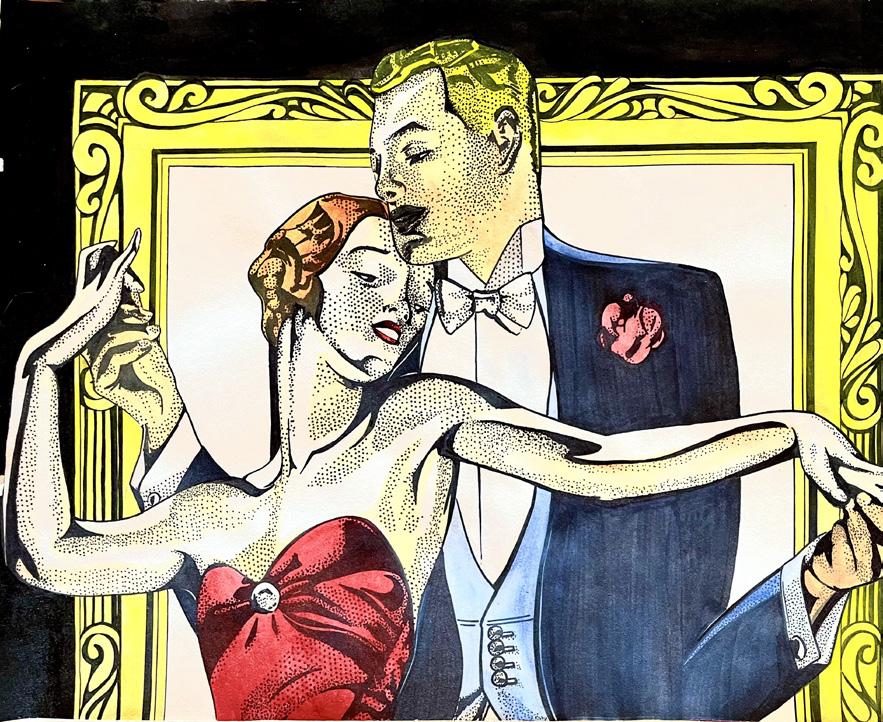
According to the Williams Institute at the University of California, Los Angeles, “An estimated 11% of LGBTQ adults in the U.S. — approximately 1.2 million people — identify as nonbinary.” There are
Dance is the best place to express emotions and find your true self. Unfortunately, after being part of the ballet world for 15 years, I believe it’s the hardest place to challenge gender roles.
Female dancers are forced to look graceful in their tutus while they dance on the tips of their toes. On the other hand, male dancers are stuck as the traditional machismo figure who must lift the women across the stage. These set gender roles can be confusing for dancers and students exploring their gender identity.
Pointe shoes are hand-crafted and are reinforced with glue, fabric, and burlap to allow dancers to stand on the tips of their toes. Receiving your first pair of pointe shoes is one of the most exciting moments in a young dancer’s career. It is understandable to recognize a young dancer’s fascination with this footwear. At the company I work with, there was a male dancer who was curious about pointe shoes and wanted to have the same opportunities to learn how to dance on pointe similarly to his female peers. The young dancers found it unfair that he was unable
around a million adults who identify as non-binary, and there is bound to be a dancer who is a part of this gender spectrum.
I first noticed Ashton Edwards appear on my Instagram feed and became curious about the dancer who wore a colorful leotard, tutu, and skin-toned pointe shoes. Margaret Fuhrer, an editor of the New York Times, interviewed Ashton, an apprentice at Pacific Northwest Ballet. She explained that they were part of a rising generation of gender-nonconforming dancers questioning ballet’s rigid gender roles. The beginning of their dance journey was difficult. Their dream to become one of the ballerinas in “Swan Lake” was quickly crushed, because they were not allowed to train on pointe. When they became an apprentice at Pacific Northwest, they were allowed to dance traditionally female roles on pointe. Ashton Edwards finally achieved their dream of becoming one of the corps for “Swan Lake.” Their gender identity never took away the true essence of the art or the story of the piece.
In professional companies, the men and women are split up into classes. The only time they would have classes together is for partnering. As a non-binary dancer, it can be uncomfortable to be forced to take classes in the gender you were born with.
At my dance studio, the classes are co-ed; therefore, all genders can attend these classes. The benefit of having co-ed classes is that the dancers can challenge each other to push their limits. Madison Mainwaring wrote in the New York Times that New York City Ballet has seen improvements in their dancers both artistically and athletically when they allowed the women to take classes with the men. Many famous companies such as Royal Ballet, Bolshoi Ballet, and Miami City Ballet started to allow female principals to join men’s classes.
Gender-blind auditions ignore the person’s physical characteristics and look at their current skills and potential for the role. Being allowed to explore outside of the classical gender archetype and find their individual voices is due to gender expression. Once dance companies get past the gender roles, dancers can enhance their performance quality and express themselves freely. This movement is growing fast and is improving the dance community for the better.
I wasn’t the little girl who was always dancing, begging her mom to sign her up for dance lessons. Instead, I was the little girl who knew nothing about dance and whose mom signed her up without asking her. Looking back, I am beyond grateful for her executive decision because, although I didn’t know it at the time, it introduced me to one of my greatest passions.
My Kathak journey began when I was six years old. Kathak is one of the major forms of Indian classical dance. It originated in northern
test our knowledge and skills.
India and is a form of storytelling in which dancers use footwork, hand gestures, and expressions to convey stories. I began going to weekly lessons where I was taught basic footwork patterns, spins, and gestures. Every week, I learned more and more techniques and how they could be built upon one another to create choreography. Every year we had one or two recitals where we could showcase our skills to friends and family. We also had an exam at the end of each year to
Although I always passed the annual exams, the first few years of my journey were rocky. I found Kathak to be fun, but for all the wrong reasons. Overlooking the connection to my culture and outlet for expression Kathak provided me with, I only enjoyed it because it was a way for me to hang out with my friends. I enjoyed laughing with my friends in class more than learning routines. I enjoyed the glitz and glam of getting ready for recitals more than actually performing in them. I would watch the older girls dance and wish I could just jump to that level. I began to care less and less about dance because I thought, ‘“What’s the point if I’m never going to be able to dance like them?” After every class, I dealt with my mom scolding me for being lazy with my posture or not showing expressions. I wouldn’t practice enough at home, and I often came to class underprepared, disappointing my mom.
As I started to grow older and more mature, my mindset shifted. I don’t know if it was the constant nagging from my mom or something within myself, but I realized that I wasn’t going to get anywhere without putting in the work. I realized that if I wanted to dance like the older girls someday, I was going to need to start working for it. I began to pick up the pace and practice at home. I recorded myself to pick out areas I needed to improve on and
practiced until I perfected them. While putting away groceries in the basement fridge, I would take advantage of the smooth, cold tile in the storage area and practice my spins. In my free time, I would go over footwork and routines in my head. Finally, after eight years of learning the art, it came time for the biggest moment in my dance career: Visharad.
FINALLY, AFTER EIGHT YEARS OF LEARNING THE ART, IT CAME TIME FOR
BIGGEST MOMENT IN MY DANCE CAREER: VISHARAD.
A Visharad is an elaborate performance at the end of one’s Kathak training to signify graduation of the dance. Over the course of one year, four of my guru sisters and I worked to perfect the nine dances performed at our Visharad. This performance would be a culmination of our years of devotion and discipline and would act as a final way to showcase our skill to a live audience of hundreds of people.
Preparing for the Visharad taught me some of the most important lessons that I will proudly carry with me throughout my life. Practicing with my four teammates taught me the importance of collaboration and teamwork. In order for our
MY DANCE STORY ISN’T THE TYPICAL ONE YOU HEAR.
I WAS THE LITTLE GIRL WHO KNEW NOTHING ABOUT DANCE AND WHOSE MOM SIGNED HER UP WITHOUT ASKING HER.
THE
performance to look eloquent, our minds and bodies had to be in perfect sync. To achieve this, we attended weekly three-tofour hour lessons. As we crept closer to performance day, this turned into numerous practices a week, sometimes ending at 11 PM. Together, we spent countless hours perfecting every step of every routine. Just 10 seconds of a routine would require 30 minutes to perfect. We would practice the same six minute routine for hours on end, to ensure we were all in sync, as even one dancer out of sync would ruin the sequence. For the first time in my life, I experienced what it was like to be depended on and have to trust others in a high-stakes situation. As strenuous and demanding as these practices were, they are some of my most cherished memories and helped create precious friendships.
Not only did I learn the true importance of teamwork, but I learned how to grow from criticism. We would often receive harsh feedback from our guru when we messed up. She wasn’t afraid to hold us accountable for our mistakes, whether they were about our coordination, focus, or attitudes. However, these setbacks only taught us to persevere more, in hopes of not only improving but also making our guru proud.
finally came. We began with an auspicious ritual called the ghungroo ceremony in which we each received our ghungroos from our guru after seeking blessings from both her and Lord Shiva. Ghungroos are strings of 150 bells
lots of emotion and expressions, something I had struggled with throughout the eight years of my dance career. However, because of my countless hours of hard work, it ended up being a success and it came naturally to me.
After months of excitement, anticipation, and nerves, the day
that are worn on dancers’ ankles, and they are worn to accentuate the different rhythms executed through intricate footwork. We then performed our first number, “Ganesh Vandana.” This piece is an invocation prayer to seek blessings from the presiding deity, Lord Ganesha, the remover of all obstacles, and to welcome the audience. The next piece was the Jaipur Gharana dance. This style of dance highlights the technical aspects of dance such as intricate footwork, rapid spins, and poetic expressions. The highlight of this 16-minute piece is “sawal-jawab,” where we asked questions (sawal) and answered (jawab) through complex footwork. Jaipur was one of my personal favorite parts of the Visharad as I have always loved intricate footwork patterns and they have always been my strong suit.
Next, one of my guru sisters performed her solo — a Sufi song about devotion and appreciation of God’s acceptance of his devotees for their past sins. Next came my solo, the most nerve-wracking part of the entire journey. This was the first time I had ever performed alone on stage, and I am proud to say it went better than I could have imagined. Both my songs were in devotion to Lord Krishna, the first being a playful, lighthearted song requiring
My second song was a fastpaced, traditional “Thumri” song, highlighting my skills of complex footwork and spins. The next piece was Tatkar, showcasing traditional todas and tukdas in the different speeds of dance: vilambit (slow), madhya (medium), and drut (fast). The sixth and seventh pieces were two more solos performed by the rest of my guru sisters. Next came Lucknow which represents the Mughal impression on Kathak. This style has Persian influence and highlights poise and elegance. Our ninth and final piece was Tarana, a beautiful combination of melody and rhythm.
This day is and always will be one of my greatest accomplishments, and I am thankful for every lesson I have learned throughout the journey. After my Visharad, I began teaching young third-year dancers at the dance studio, in hopes of instilling in them the same excitement my teachers instilled in me. I have been able to act as a role model to them, helping them form a deeper connection to Kathak and their Indian heritage.
NEXT CAME MY SOLO, THE MOST NERVE-WRACKING PART OF THE ENTIRE JOURNEY
THIS DAY IS AND ALWAYS WILL BE ONE OF MY GREATEST ACCOMPLISHMENTS, AND I AM THANKFUL FOR EVERY LESSON I HAVE LEARNED
NOT ONLY DID I LEARN THE TRUE IMPORTANCE OF TEAMWORK, BUT I LEARNED HOW TO GROW FROM CRITICISM

As I stand behind the curtain, the lights go out and time stops right in its tracks. My mind goes blank as the darkness engulfs me. I try to maintain my balance but I can barely see my feet shifting back and forth on the floor. I stand there helpless, because there is no way to escape this moment. Time is frozen, with me right in it. But, as soon as the curtain rises and the first note plays, everything changes in the blink of an eye. The butterflies inside my stomach vanish and I feel like I can do anything. In front of hundreds of people, I dance and dance as if I forgot anyone was even watching in the first place. Why have I always been so confident when I am on stage, yet
shy. Starting in a brand new environment and feeling pressured by new responsibilities, I felt this
opportunity to choreograph dances when I reached high school also allowed me to have a conversation with the audience and show more of the “me” that had been waiting to be unleashed.
get so nervous when I have to give a presentation in school or talk to a stranger? This question, I constantly asked myself.
I have always labeled myself as “introverted”— feeling anxious about speaking in front of a large group of people, keeping to myself, talking quietly. I have opinions and ideas to share with others, but am nervous about what they might think. I could feel so prepared to talk about a topic, yet when the moment comes, I totally blank and stumble on every word, struggling to form a simple sentence.
In sixth grade, I was extremely
label controlling me more and more. After the first few weeks of school, an audition form to try out for the school’s dance company caught my eye. There was no way I was as good as the high school girls, but I worked up the courage to go. As the youngest there, I hid in the comfort of the back corner, not saying a word until the teacher called me and a few girls to the front to do improv (where a song is played and we are supposed to create whatever movements come to mind). My heart was pounding in my head as the color on my face changed from pale to a panicked, warm red. The only thing on my mind was all of the eyes glued on me, but when the music began, that no longer seemed to matter. The music took over my body as I turned and leaped; and even though I definitely tripped a few times, the weight of my insecurities lifted. All of a sudden, clapping overtook the room. I could hardly believe it — everyone was cheering for me.
That moment was when I first knew that there was more to me than just being the “quiet” person afraid to step out of her shell. As I learned more steps and styles, I created a whole new language for me to communicate with. A language that consists of zero words. The
Now, almost seven years later, dance has become my second voice. The voice that gives me the confidence I need to reach out of my comfort zone, speak in front of others, and face the music. Pun intended. In dance class, I no longer hide in the back, hoping no one notices me. I stand in the front row in the studio and, when I see the new sixth graders standing where I used to
be, I feel a sense of responsibility to be a role model and reassure them that hard work really does pay off. Introverted versus extroverted, do these labels really matter? I may still be “quiet” but I no longer confine myself to the status quo of being an introvert. Dance lifts these labels and connects everyone together. With dance, I can be totally myself yet feel like someone brand new at the same time, as I transform under the bright stage lights. My new voice has given me an unbreakable confidence to tackle nervewracking situations and let others know who the real me is. I cannot stop and keep my perspective locked on what another person thinks about me, and with dance, I can block out all of the negative energy that surrounds me. Finding this new voice inside has made me understand that I can be anyone and anything I want to be, and that is truly empowering.
In front of hundreds of people, I dance and dance as if I forgot anyone was even watching in the first place
My heart was pounding in my head as the color on my face changed from pale to a panicked, warm red
Dance lifts these labels and connects everyone together
In the worn-out dance studio, among the throng of whispering girls, I loosened my suffocated energy. Back then, as a third-grader, I had the stereotype engraved in my mind that boys were too cool to dance or sing — that was for girls. I was chained to my friends’ misconceptions of “Dancing is so girly!” and “What boys dance?”
Even then, I still danced at home. My brother would play the third movement of Beethoven’s “Moonlight Sonata,” and I would spin the velvet keyboard cover around me and my penguin pajamas while performing my best interpretation of interpretive dance. While I was twirling and sashaying, my mom noticed my interest in dance.
Therefore, at the beginning of third-grade, I trudged up the stone steps of the church where I would have my first contemporary dance class. After signing in, I glanced at
the manager’s face as she shook my hand and nudged me towards the studio. Imagine my surprise at the bright eyes and blossoming smiles that abounded — not at all the cold, stony faces I had expected.
barres. I subconsciously shuffled my bright blue-and-green Sketchers when I spotted the girls’ pink ballet and jazz shoes. My anxiety was further exacerbated by the tall mirrors lining the front wall that multiplied each person, 10 girls reflected into 20 and then 30. I watched a girl kick her legs so that they formed a line in the air, her back straight, toes flexed, arms curved perfectly.
Yet walking into the studio, my deepest fears were confirmed: there were only girls there. They were huddled in groups in different corners — blonde, black, and brunette heads down and voices hushed. Some were stretching on
I gulped. The smell of the warm, fuzzy sunlight wafting in through the window was suffocating, choking any words out of me. My heart pounded against my body even harder. I had stepped back into the doorway, one leg twitching to leave and the other rooting me to the ground, with a fear of my mother’s chastising voice keeping it there. “Do you know how long I worked to find that place and sign you up there? Do you know how much
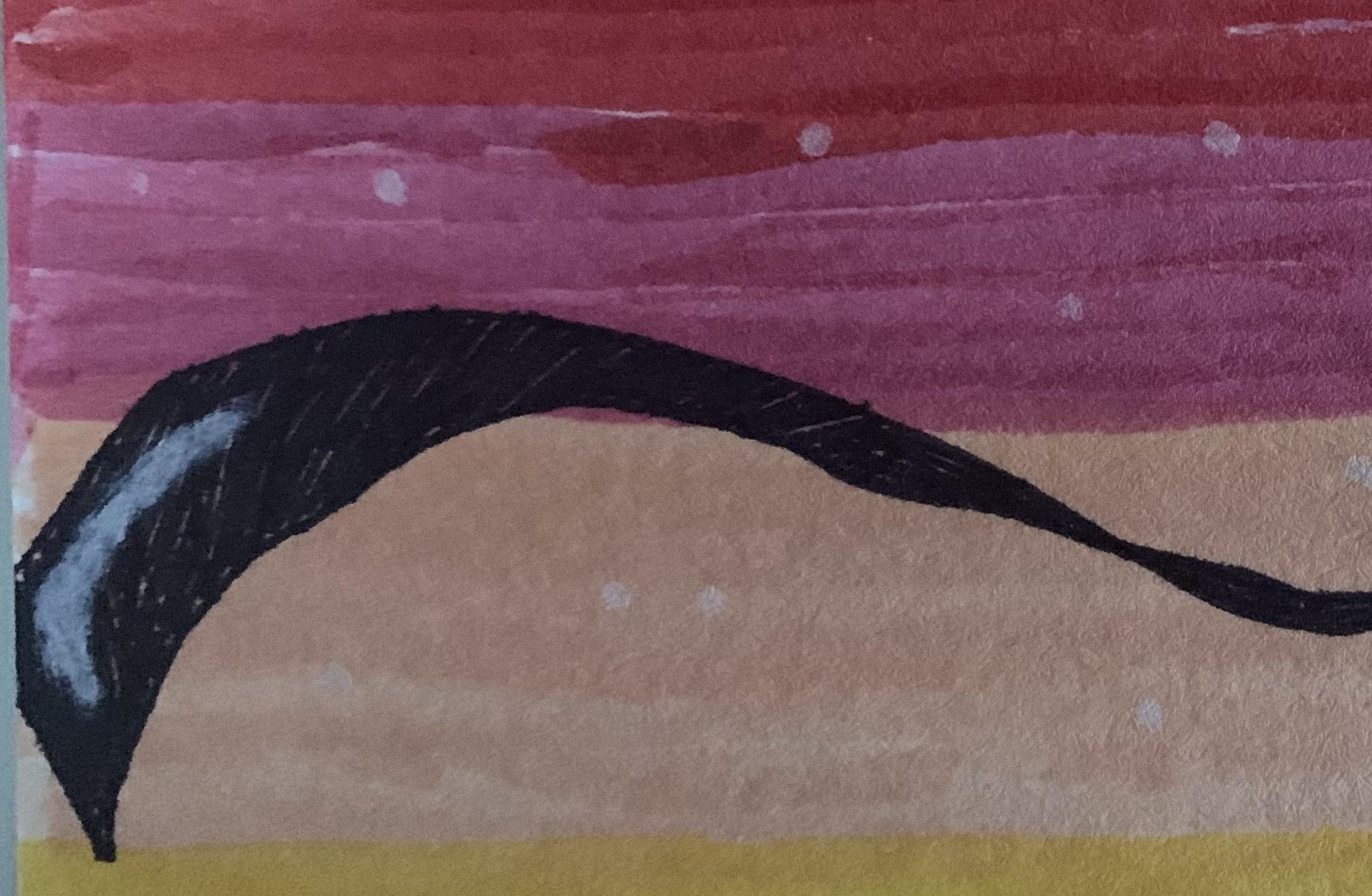
Back then, as a third-grader, I had the stereotype engraved in my mind that boys were too cool to dance or sing — that was for girls
money I paid? Now, I did my part. Time for you to take one for the team.” I could already hear that conversation.
the girls encouraged me to join, those stone-cold faces defrosting and emanating their true warmth. Enthusiastic words like, “C’mon, join us!” and “Yeah, it’ll be fun,” and “Just get in the circle!” surrounded me as my nerves eased slightly and I slid into the circle.
accepting smiles. I had the same right to dance as anyone else; my curiosity would no longer be overshadowed by generalizations of what activities certain genders could do.
Then something brushed my arm, and I looked down to see a little fair-haired boy step into the room. The poise in his gait, the confidence in his relaxed posture — he was everything I wanted to be. He was a stranger like me and therefore, a friend.

When the class started and we all sat down in a circle on the polished cedar wood floor to introduce ourselves,
For the next hour, I didn’t care how good I was at dancing or how I looked; I just lost myself in the groove and beat of the songs on the instructor’s 2010s Pop Hits playlist. We even broke off into small groups and choreographed our own 30-second dances to perform to the class, my previous piano ribbon experience kindling my creativity as I jumped and sashayed across the room.
As the class ended and my heavy breaths rasped in my ears, I felt the thrill of dance, a garbage chute for my restlessness and voice for my passion for music. The chains of stereotypes that once ensnared my heart were broken by the excitement and the girls’
Dancing out of the building that day into the fresh fragrance of the open air, my mind was a tornado of excitement and gratitude for this dance class. Among all the emotions came: “Mom, I want to go again.” And so I did — again and again and again.
ARTWORK BY ELLA HEDGES, DAYTON, OHI subconsciously shuffled my bright blue-and-green Sketchers when I spotted the girls’ pink ballet and jazz shoes
The chains of stereotypes that once ensnared my heart were broken by the excitement and the girls’ accepting smiles
Graciela is a 15-year-old from Pittsburgh, Pennsylvania, who writes, sings, and plays piano. She has played at local festivals, talent shows, charity events, various venues in Nashville, Tennessee, and at Hard Rock Café. In October 2021, she performed at the Fourth Annual Women Who Rock™ Benefit Concert, joining an all-female roster of renowned entertainers. She recently released a new EP in October of 2022, titled “Live Like This.” Graciela has been working alongside six-time, Grammy-winning producer Jimmy Hoyson and award-winning music producer/ composer Rob Deaner. She aspires to follow in the footsteps of her musical influences as a must-see entertainer and pianist.
***
McKinnlee H: What entices you to create your music, and what are your biggest inspirations?
Gracie: My love and passion for music have kind of always been there, and at the end of the day its all I really want to do. My biggest inspirations are Freddie Mercury, Taylor Swift, and Paul McCartney!

MH: How old were you when you fell in love with the piano?
GR: It was a very young age, I started taking piano lessons at like seven to eight years old. Somewhere around then, I got into piano, and then I just started singing.
MH: Do you have a favorite song you have ever written?
GR: I love all my songs for different reasons. I’d say my favorite that I’ve written is probably “To Hold You.”
MH: Do you have a favorite venue you have played at?
GR: My LA show for the Women Who Rock™ event. Jordin Sparks was the host for the night, and that was probably my favorite place I got to perform.
MH: How do you feel when you stand before a crowd of people?
GR: I feel like I’m going to throw up and I’m scared to death. But then, as soon as I hit the stage, the adrenaline rushes — it’s just the best feeling in the world. I just loosen up.
MH: Have you ever fallen ill to writer’s block?
GR: Yes, I think I have. I was just kind of in it a few weeks ago. I just couldn’t come up with anything. I thought I wasn’t going to ever be able to write again, but I eventually got out of it. [So yes,] I definitely have.
MH: How do you combat writer’s block?
GR: I struggle with finding a way to get out of it. I just keep on pushing at [writing] every day — even if I can’t come up with anything, even if it’s just a line. I just continue to try to write something even to get a little progress, and eventually, inspiration will just come. Then I get out of it. I definitely think you have to continue to work at [writing], even if you’re stuck. That’s the only way to get out of [writer’s block].
MH: What would you say to another young person who wants to create music?
GR: I would say that [you’re] never too young to start and to just go for your dreams if you are that young. You know what you want to do, and you want to create music. I think that’s amazing and I think you should go for it.
MH: What influenced your new album “Live Like This?”
GR: This album, I really got in touch with songwriting, and that was really big for me. I sat down way more and started writing. I had some people help me with learning how to song-write, like Rob Deaner and my producers. It’s just that my everyday life really influenced me in writing the songs. But this year I’d definitely say I’ve written more than I ever have before, and so I think that was where the album came from.
MH: Do you have a song that is closer to your heart in your new album?
GR: Oh, they’re all kind of like that to me, I love them all equally! But at the moment, I would say “Burden.”
MH: How long did it take you to compose every song in your album?
GR: I think around a year... it took a while. You have
to go through the songwriting process, and then the recording process and demos, and then getting people to come in and play (if you have to play any instrument. It’s a long process — and I don’t think I was aware of that before. I just realized how long it actually took, but in the end, it’s worth it.
MH: You just mentioned that it was a long process with a lot of smaller processes to that, like songwriting and recording. What would you say you enjoyed most from that?
GR: My favorite part was probably either recording (like getting to listen to the music, the studio environment, and getting to actually sing) or at the end when you’re making final details. Just listening to it in a studio. It’s just that feeling of first hearing it all come together. It’s the best feeling because you had the entire year of what you visioned in your head, and then finally, when you get to see it all come together its really cool!
Make sure to follow Graciela on social media today! Instagram & FaceBook: @gracielamusicofficial TikTok: @gracielamusic

The singer-songwriter and pianist’s newest EP, “Live Like This,” is full of “introspective and reflective originals.”

I gave my heart to music when I was just three years old. I’ve played for as long as I can remember and loved it for longer. When I learned my ABCs, I learned “red strings C, blue strings F” at the same time. In my kindergarten classroom, I would laugh and play with the other students, and then afterward change into concert attire to play at weddings, birthday parties, retirement homes, and my favorite, music festivals. By the time I learned how to ride a bike at eight years old, fingers calloused from hours of playing, I’d begun the piano, and had already been playing the harp for years.
Difficult memories — blisters making it hard to grip rainbow crayons in my stubby fist, stretching with all my might to reach the piano pedals, and saying goodbye to harp after harp as I grew older. I pushed through, even at a very young age I knew that music was something I loved and would willingly spend hours strumming away. My happiest memories — painless fingers dancing their way across strings with newly toughened skin, the joy
I felt when I played an octave on the piano for the first time, discovering that as each harp grew, so did I.
There are two main kinds of harpists where I live, Celtic and classical, neither are common musicians. Celtic harps are of Irish descent. They are smaller than their classical counterparts and have levers that change from natural to sharp or flat. Celtic harps come in a range of sizes and sounds, from just the eight-stringed lap harps to the largest Celtic harps four feet in height. Classical harps originated from Europe, specifically France, where they spread throughout the centuries across the globe, from the cross-stringed Spanish harps to Mediterranean metal-stringed harps. Classical harps have 47 strings, and seven different foot pedals that change the note from flat to natural to sharp and vice versa. The smallest that classical harps get is around five and a half feet, but the average size of a harp is six feet in height. A few years ago I could name five or six classical harpists living in my area, currently, I am the only one.
I began the harp at three as a Celtic harpist — after all, the twenty or so harpists who do live here stem from one original Celtic harpist, my first teacher. Having been forced into shifting from Celtic harp to classical at eight, a decision made by my loving parents that I strongly resented at the time, I was involuntarily coerced into leaving my teacher of four years. Saying goodbye and finding a new teacher was hard. My family and I began traveling farther and farther before finally, my
parents decided on my current teacher and friend, Mrs. Dominique Piana.
I don’t think that it is a stretch to say that we did not get along in the beginning. I knew the Celtic harp, so different from the classical ones. Forced to start all over again on a foreign instrument, with a strange sound, and very different rules, it was much more difficult re-learning the harp than learning how to play the first time. The classical harp world is a much colder place for newcomers, I left my first competition in tears, almost giving up on the harp entirely. If not for Mrs. Piana’s insistence that I stay, I would have done so.
Despite my dismal debut into a new harp world, Mrs. Piana and I grew close as I fought to find the motivation to play. In the six years since then, Mrs. Piana has been my longest friend, cheering me on while I played with a broken arm, gifting me her fancy concert attire outfits,
introducing me to her former teacher and esteemed harpist Susan McDonald, and coaching me through my latest competition despite not having seen each other throughout the pandemic, this time leaving victorious with a shiny silver medal. Mrs. Piana has always been a supportive friend who I know I can turn to whenever I struggle. At fourteen, my life has been filled with music. Dancing, swaying, and lyrical music that I imprinted into memories and made my own.
“You haven’t changed at all,” she said from behind her glasses, eyes and mouth crinkling in a rare smile as I gazed into a face I hadn’t seen for the past two years.
I grinned broadly back inside my mask, noticing that I no longer had to crane my neck to look into her watery blue eyes. Her hair was more yellowish than before and a few more wrinkles had been drawn on her face and hands, but she was still the same dearest friend I had known pre-pandemic. Eyes burning with the effort not to cry, I laughed as she waved me into an ever-rare hug, pretending not to notice when she sneakily rubbed her eyes on
sleeve.
her
“MUSIC IS A REFLECTION OF ONE’S LIFE. THE WAY YOU GO ABOUT LIFE IS REFLECTED IN YOUR PLAYING. IT’S HEALING, STRENGTHENS THE SOUL.” — DOMINIQUE PIANA, MY CONFIDANT AND MUSIC TEACHER FOR THE PAST SIX YEARS.
AN INSTRUMENT IS AN EXTENSION OF YOURSELF, LIKE A PIECE OF YOUR SOUL GIVEN PHYSICAL SHAPE
The strings on my sweet, precious violin are G, D, A, and E, The strings that vibrate ever so clearly on my violin, To me, they stand for Genuine, Dare, Allegiant, and Ebullient,
The G string is the lowest string, It supports the other sounds,
The D string’s vibration is rich and steady, it also plays a big role reminding you of the night sky as you play, making wondrous sounds,
The A string is sweet and pure, There is no mistaking that sound of vibration mixed with sticky, sweet honey, It’s pure without any covers, just pure sound echoing off the walls,
The E string is the highest pitch in the violin strings, It tops it all off, like a cherry on the top, finishing the last touches, to make the music sound beautiful,
All of those strings are equally great but in different ways, they all harmonize together, creating something much more.
POEM BY SOEUN LEE, TENAFLY, NJ ARTICLE BY BRIAN GEONOO KIM, SAN JOSE, CAOn June 12, 2021, I was given the chance to perform a song at a school event called Soniterrace. Soniterrace is one of the most popular events during the Arts Week in NLCS Jeju; performing at Soniterrace means that one is a great singer, or an enthusiast that loves performing. In my case, I was an enthusiast who just loves being on stage and was a little good at singing.
I decided to sing a song called “Pierrot Laughing At Us.” This song is a piece of funky Korean pop music from the 1990s, and I thought it would match the upbeat mood at Soniterrace. I auditioned, and I got in. This was because of my previous experience in busking in school. I liked to sing with my friends when there was a busking event; however, singing on a proper stage, in front of over 100 people, was something different.
The experience was absolutely amazing. I expected myself to tremble on stage, and to be honest, I did. However, as I sang along, I was no longer trembling and the adrenaline was released. Soon, I was rocking the crowd. The crowd who came to watch looked like they were enjoying themselves — they were singing along, waving, and clapping along to the beat. I felt a sense of delight when watching them. At that moment, I knew I was born to stand in front of people and perform.
Singing at Soniterrace was like a dream-come-true moment. When I first joined NLCS in Year Nine, I looked at the older students who were performing as my role models. Now, as I became one, I thought that I could become a role model for anyone, too. The experience itself ultimately helped me build my character and solidify what I admire and who I am.
I will continue on with my performing arts journey throughout my years in NLCS Jeju until I discover who I am and what I am capable of.
My guitar pick is a small, modest tool that can be used to create sublime, elegant music. By itself, the pick is just an ordinary piece of plastic; it’s made of inexpensive celluloid that forms a small isosceles triangle with smooth, rounded edges. Similarly, the surface of the pick is unremarkable. The brand mark had worn off after countless hours of practice, leaving only the design of black and purple splotches. Overall, when it's alone, the pick seems to be a dull and worn-down tool of no value. However, when paired with a guitar, it transforms into a genius device that produces magnificent symphonies.
The monotonous atmosphere of my room creates the perfect environment for music-making. As I enter my room, the dull stuffy climate begs for change. The boring beige walls, dying dim lights, and tedious tan carpet form a depressing prison-like ambiance that longs for color. This bleak, dreary turf requires something cheerful and upbeat to transform the darkness into happiness. Luckily, I have a simple solution: I grab my pick, take out my guitar, and fill the room with my spirited performance. The previously lonely space is furnished with optimism and joy. As I play, my exuberant yellow labrador Lily eagerly rushes upstairs to get to my room. When she arrives, her demeanor instantly changes from vigorous and rambunctious to calm and quiet. She slowly creeps into the room, silently crawls into a corner, and solemnly sits down. Lily has learned through experience that
loudly barking or rowdily running around leads to doggy purgatory: getting locked out of my room. However, since she is acting wellbehaved, I ignore her and continue playing. Her ears perk up as she sits in a trance, mesmerized by my notes and harmonies.
However, my musical journey has prior origins. Many years ago, I began pursuing music by joining my middle school’s orchestra as a violinist. I loved the dazzling, graceful singing of the famous four-stringed instrument. While learning the violin, I first experienced the sense of complete immersion that can only be induced by music. As my hand sped up and down the cold wooden fingerboard while my bow glided across the stiff metallic strings, I became totally absorbed in the melodies of my music. All other thoughts were pushed out of my head as I completely zoned into my playing. The fingers on my left hand perfectly locked onto the correct notes while my right hand attacked the strings with my bow. I adopted SpongeBob’s state of mind when he hypnotized himself to forget everything except “fine dining and breathing.” This otherworldly experience led me to develop a deep passion for music, as well as an appreciation for the skill required to excel in the field.
Unfortunately, after years of playing the violin, I had found one major flaw with my school’s orchestra — the Victorian-era classical songs it exclusively plays are bland and uneventful. After performing dozens
of nearly identical symphonies by Mozart and Bach, they begin to feel shallow and repetitive. I longed to play exciting modern music instead of dismal études from the 18th century. Not being able to handle the drab, emotionless tunes, I retired from the violin after four long years. However, unable to shake my musician’s spirit, I retained my drive to make music. Eventually, one mundane afternoon, I picked up my family's ancient dust-covered guitar that hadn’t seen sunlight for over a decade. After sitting down and strumming a few simple chords, I instantly became obsessed with the instrument. At that moment, I made a goal to become talented at the guitar and expand my instrumental palate. For the next few weeks, I spent each free moment studying basic techniques and learning beginner songs on YouTube.
Today, after years of taking private lessons, I can now play the music I enjoy. While it was a long and drawn-out process to reach this point, I loved every minute of it; some of my favorite memories are from experimenting with my guitar. I achieved my musical accomplishments by creating a goal and working hard to fulfill it. Just as a guitar pick is an undistinguished tool that can be used to make beautiful melodies, goals are ordinary thoughts that can be used to achieve greatness. If you set goals for yourself and work hard to achieve them, you can accomplish anything.
“My name is Viviana Alfaro. I am 15 years old and a Junior in high school at California Virtual Academy. I have been studying the harp for 11 years and am currently a student of Jennifer Ellis and attend the pre-college program of music at SFCM. I play for both the youth orchestra of Oakland, OSYO, and locally in my hometown for the MJC community orchestra.”
Teen Ink: What do you love most about music and playing the harp?
Viviana: What I love most about music is that it is a way to make connections and is an escape from the everyday. Everyday life can be overwhelming and music has always helped me to take a step back and breathe for a moment. What I love most about the harp is that it is a way to express yourself in a language that everyone understands. Like many instruments, the harp is a beautiful and versatile form of self-expression that has helped me to grow as both a musician and an individual. Music has also helped me to form connections within the musical community as there are many young musicians like myself who struggle and strive with the same goals and dreams.
TI: How long have you been interested in music?
VA: Ever since I was very young I have loved music. Some of my earliest memories are of
going to the symphony with my family and listening to many different orchestral works. When I was four years old, I fell in love with all things music and started playing the harp. I am now 15 years old and continue to play the instrument that has influenced and shaped so much of my life.
TI: How did you get into the hobby?
VA: When I began the harp at four years old, I began on the Celtic harp, the smaller Irish cousin of the classical harp. My parents had taken me to a local music festival where a group of Celtic harpists played traditional folk songs and sang along. I instantly fell in love with the instrument and style of music and started taking lessons from one of the harpists at the festival. Later at eight years old, when I became interested in the Classical harp, I made the decision to switch styles and have remained a Classical harpist.
TI: Do you have any other hobbies?
VA: Around the time that I started learning classical harp, I also began to play the piano, and still continue to do so. Along with playing both instruments I also enjoy drawing and writing.
TI: Do you have any tips for those starting out in this hobby?
VA: A tip that I have for those starting out on the harp is to never give up! All hobbies take lots of time and effort and are all rewarding in different ways. I find the harp to be my most rewarding hobby because it is a way for me to measure progress and growth even when other things in my life can seem stagnant. For those starting out on something new, it is always important to not quit when things get frustrating and instead move forward, because it will get easier and easier the more you continue!
TI: Do you have any interesting stories/experiences relating to playing the harp (or anything else music related)?
VA: While, “My Friend, Music” only mentions one of the mentors and friends that have helped me on my musical journey, there are many others as well who have influenced me just as much, or even more. My story may focus on one individual in particular, but in truth, I would not have made it as far as I have without the support and guidance of a larger group of people. Part of what has kept me playing the harp is the friends that I have made and the community that I have found because of our shared love for music, none of which is possible without the support of each other.
2
3



Harley K., 6
Lauren Williams, 7 Nyla Morton, 9 Zachary Roland, 12
Kayla Sandoval, 17 Siya Taparia, 19 Anonymous, 21 Christopher Fu, 23

Viviana Alfaro, 27 Soeun Lee, 29
Brian Geonoo Kim, 29 Jackson O’Brien, 30
Christopher Fu, 13 Viviana Alfaro, 31
McKinnlee Haberman, 25
Veronica Butler, Front Cover
Pepper Rose, 5
Jenny Jeewon Youm, 6
Yeony Jung, 7 Yincheng Qian, 9 Anneliese Pridgen, 11
Jackie Huang, 12 Yuming Chen, 15
Priyadharshini Manivannan, 15
Skye Funston, 15 Echo Dong, 16
Kaylee Bleeker, 17 Madison Cohen, 21
Ella Hedges, 23 Anonymous, 27 Marian De Silva, 33
Evy Mansat-Gros, 33 Elaine Feng, 33 Felicity Liu, Back Cover
ON THE BACK
Managing Editor: Noelle Campbell
Consulting Senior Editor: Cindy W. Spertner Associate Editor: Kylie Andrews Consulting Editor: Ashley Nix
Head of Strategic Partnerships: Chane Hazelett
Teen Ink is a bi-monthly journal dedicated to publishing a variety of works by teenagers. Teen Ink Magazine and TeenInk.com are both operating divisions and copyright protected trademarks of StudentBridge, Inc. Teen Ink is not responsible for the content of any advertisement. We have not investigated advertisers and do not necessarily endorse their products or services. Publication of material appearing in Teen Ink is prohibited unless written permission is obtained. Teen Ink is designed using Adobe InDesign.
